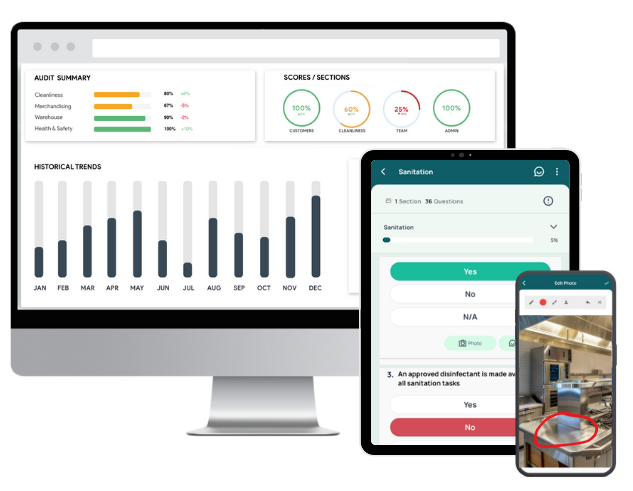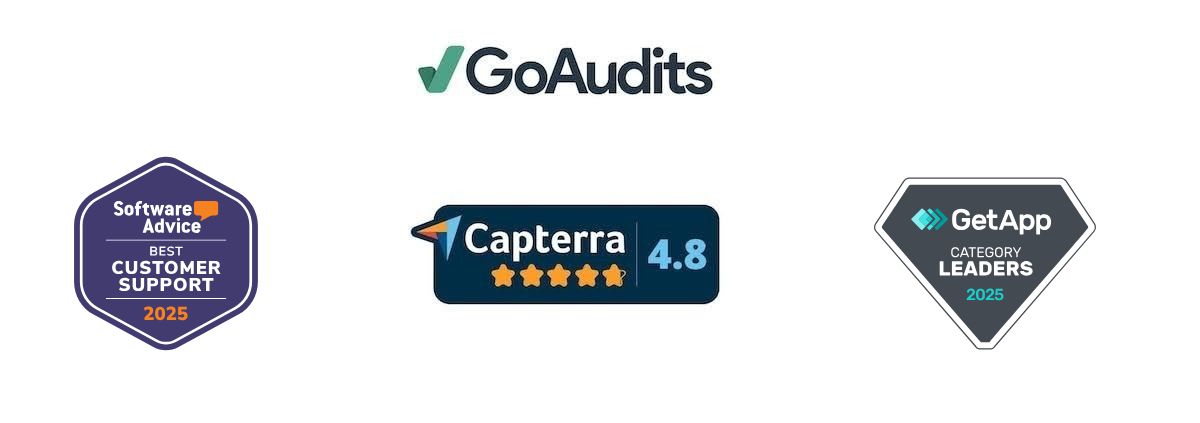Running a restaurant today means more than great food and service: it’s about managing tight margins, labor shortages, food waste, and ever-changing compliance rules. The right restaurant management app helps you automate routine tasks, gain real-time visibility, and keep teams aligned, so you can focus on what matters most: guests and growth.
In this article, we’ll compare the top restaurant management apps for owners and managers, explore essential features, and share free checklists to help you streamline daily operations.
Essential Features of a Restaurant Management App
Here’s a quick comparison of features restaurant owners and managers need in the app:
Features Best Apps for Restaurant Owners Offer
Owners focus on long-term performance and financial stability. They need tools that provide visibility across multiple outlets and support decision-making.
- Multi-location and franchise management ensure consistency and control over every branch, and performance tracking to support expansion planning.
- Business forecasting and profitability insights help track trends, margins, and growth opportunities.
- Accounting, payroll, and HR integrations simplify financial processes and reduce manual work.
- Marketing and promotional ROI analysis helps assess which campaigns drive revenue.
- Role-based access control and data security protect sensitive information.
- Compliance and audit documentation maintain transparency and legal readiness.
Features of the Best Apps for Restaurant Managers
Managers handle day-to-day operations. They need features that streamline workflows and improve service quality.
- Table reservations and floor management help optimize seating and reduce wait times.
- Staff scheduling and performance tracking ensure the right people are on shift.
- Daily revenue summaries and shift reports simplify reporting.
- Customer feedback tracking helps maintain restaurant service standards.
- Hygiene management ensures food safety and regulatory compliance.
- Customizable checklists and templates track operational tasks and ensure consistent procedures.
- Task management and communication tools keep teams aligned, while issue alerts allow quick action when problems arise.
Features Both Owners & Managers Need
Certain features are essential to both roles.
- A POS and billing system that handles orders, splits checks, applies discounts, and processes multiple payment types ensures transactions are accurate and fast.
- Real-time sales and performance reporting gives instant visibility into operations.
- Inventory and supplier management help control costs and prevent shortages.
- Menu management and updates ensure accurate listings and pricing.
- Integration with delivery and online ordering platforms keeps all channels connected.
- Cloud access and real-time dashboards provide flexibility and oversight anywhere.
- Customizable reports let both owners and managers focus on the metrics that matter most.
Based on these features, we have created a list of 5 apps that are beneficial for both restaurant managers and owners.
Top 5 Restaurant Management Apps for Restaurant Owners & Managers
Here are our top 5 picks for restaurant management apps.
1. GoAudits Restaurant Operations Management App
GoAudits helps restaurant owners and managers maintain consistent quality, safety, and compliance across all locations. It’s a simple yet powerful restaurant operations management app that brings structure and visibility to daily routines. From kitchen hygiene to customer service and brand standards, GoAudits food safety software makes it easy to monitor performance, assign corrective actions, and keep every team accountable.
Key features of GoAudits restaurant management software:
- Standardize daily opening/closing, kitchen, hygiene, and service checks with easy-to-use mobile forms.
- Use pre-built restaurant audit templates, create your own checklists to match your brand’s requirements, or have GoAudits digitize your SOPs.
- Conduct audits on phones or tablets anytime, even offline, and easily attach and annotate photos for visual proof of issues.
- Automatically generate professional reports with scores, timestamps, and team insights.
- Assign corrective actions to staff, set due dates, and track completion in real time.
- Ensure consistent food safety, quality, health, and brand standards across all branches.
- Monitor trends, recurring issues, and audit results across multiple locations.
- Improve team communication: automatically alert team members and managers about new reports, approvals, or overdue tasks.
- Get a complete view of restaurant operations and performance, ensuring consistency, safety, and guest satisfaction everywhere.
👉 The Independent Food Company leverages GoAudits to manage its food safety and quality processes more efficiently across 25+ outlets and streamline collaboration between teams at the headquarters and on the ground. It conducts regular audits of food hygiene, kitchen quality, and supplier standards. Its Quality and Hygiene team now performs inspections digitally, captures photos, and shares findings instantly with operations teams. This ensures faster action on corrective measures, reducing audit turnaround time from four days to just one. Managers track trends, analyze compliance scores, and make data-driven decisions to consistently maintain high standards of food safety, quality, and brand excellence.
2. Gofrugal ServeEasy
Gofrugal is an all-in-one restaurant ERP that simplifies operations, cuts wastage, and boosts profits. From POS to inventory, CRM to franchise management, it brings every process into one easy, integrated platform. Manage dine-in, delivery, and online orders effortlessly.
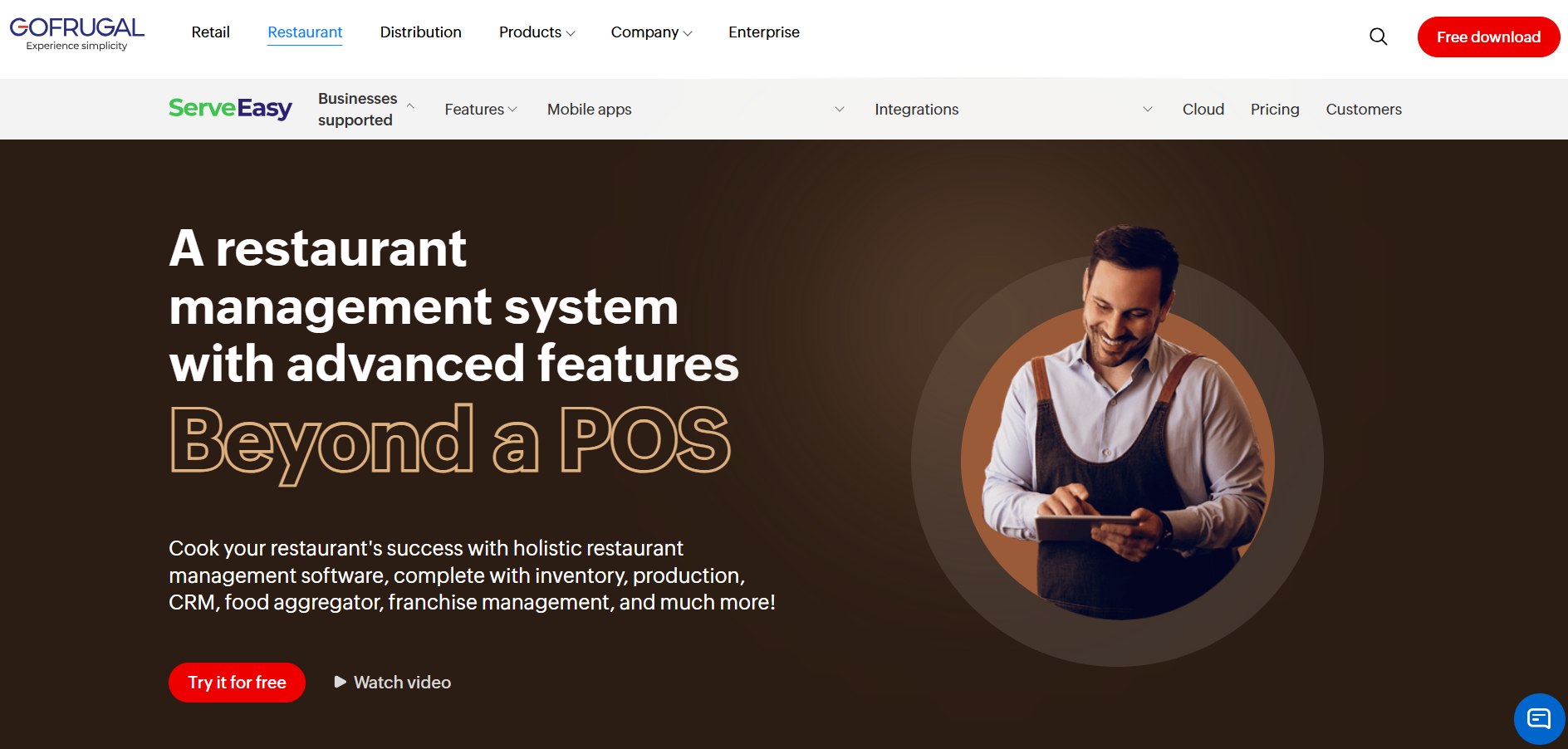
Key features of Gofrugal:
- Run billing smoothly across tablets, mobiles, and desktops, even without the internet.
- Connect with food aggregators to simplify online order tracking, reduce delays, and improve customer satisfaction.
- Monitor stock levels in real-time, reduce waste, and manage recipes.
- Enable customers to order and pay directly from QR menus and enhance guest convenience.
- Engage customers with targeted promotions via SMS, email, and WhatsApp.
3. Odoo
Odoo is a POS solution built for speed, simplicity, and flexibility. It streamlines restaurant operations through a single interface. Whether managing dine-in, takeout, or delivery, Odoo keeps your team connected, your customers satisfied, and your business running smoothly, online or offline.
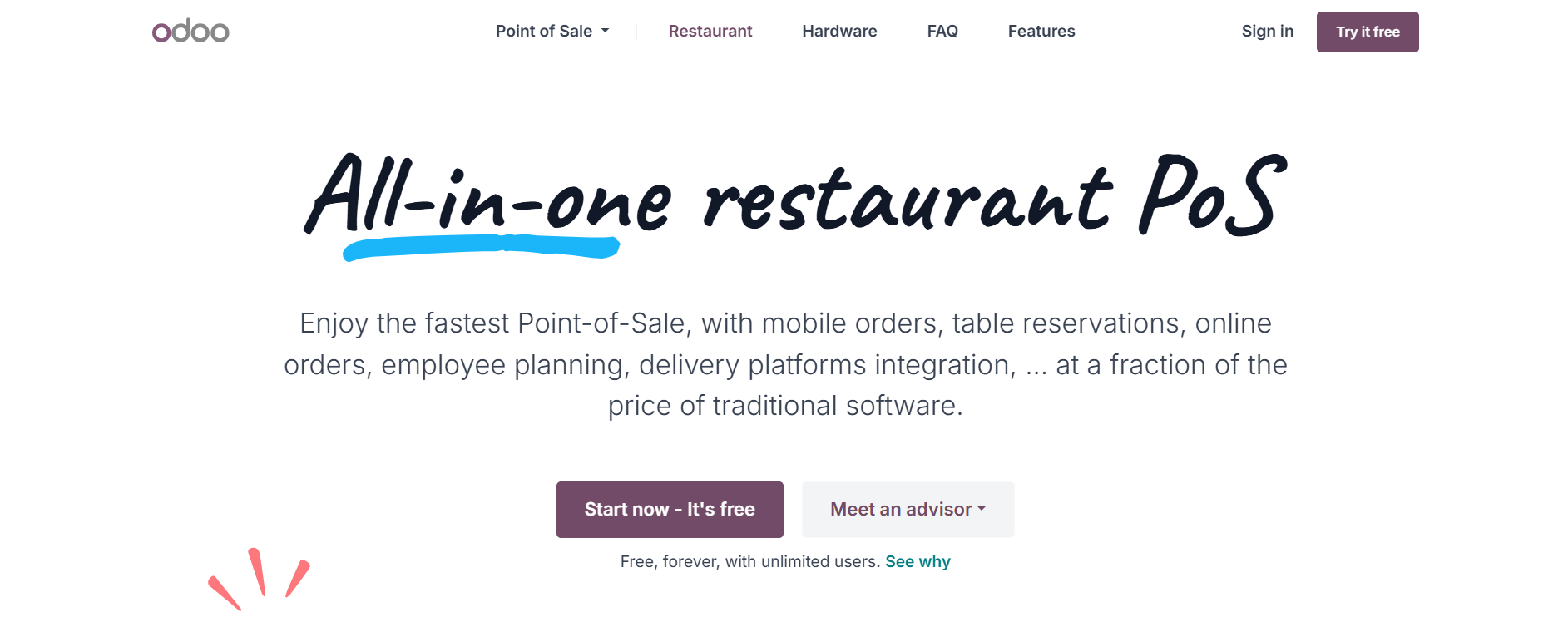
Key features of Odoo:
- Manage orders, payments, tables, and loyalty programs from one dashboard.
- Enable customers to order and pay directly via kiosks or smartphones for faster service.
- Visualize your restaurant layout in real-time and track table status to boost team efficiency.
- Sync kitchen and bar operations with live order updates and automated printing by category.
- Accept multiple payment methods, split bills easily, and reward loyal customers.
4. Owner
Owner is an AI-powered restaurant management app built to help restaurants grow sales, attract more customers, and keep them coming back. With an SEO-optimized website, seamless online ordering, and a branded mobile app, Owner helps you take control of your online presence, boost revenue, and own your customer relationships.
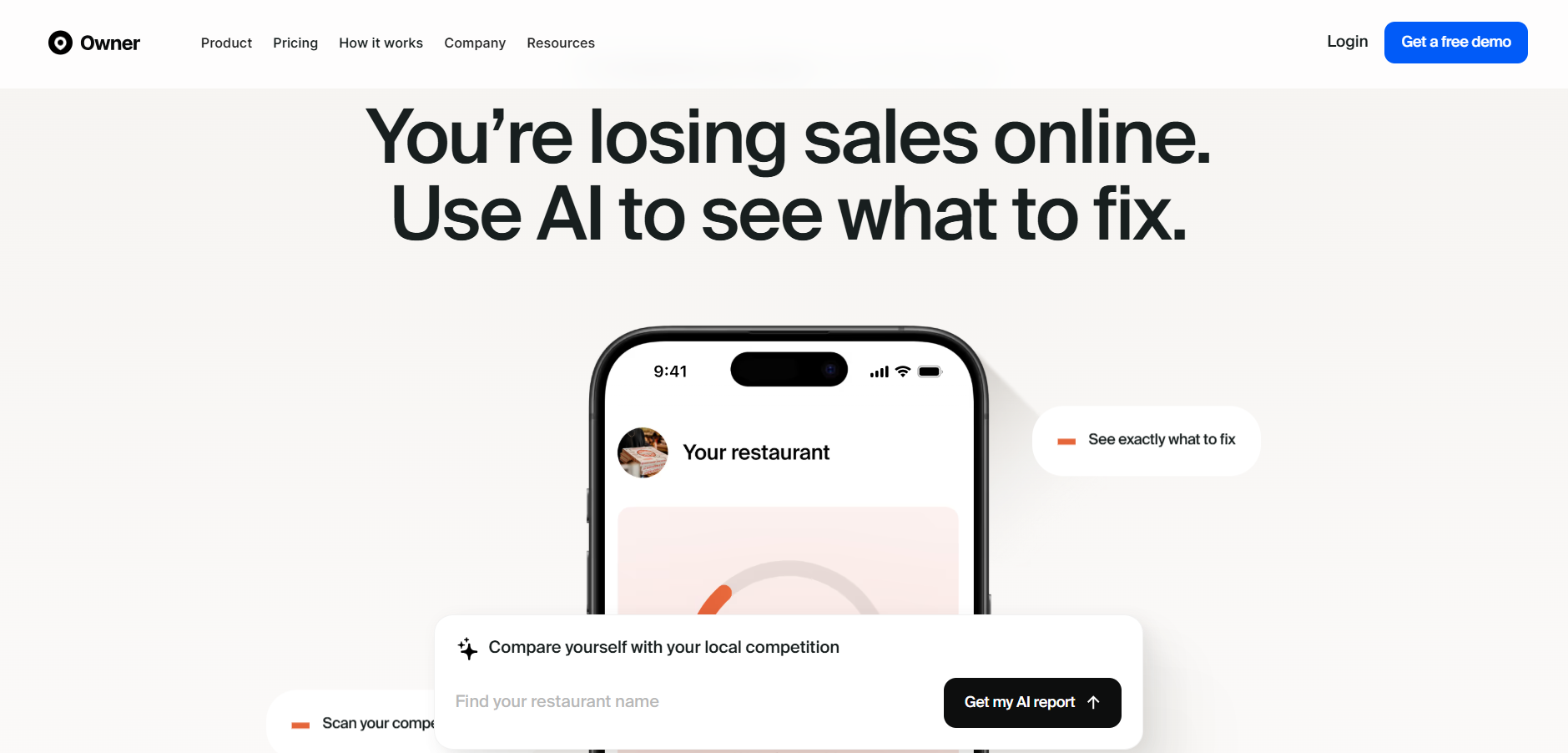
Key features of Owner:
- Get a website designed to rank higher on Google and attract more organic traffic.
- Offer a fast, intuitive ordering experience that feels just like the big national brands.
- Use smart reminders and offers to turn one-time visitors into repeat customers.
- Encourage repeat orders with points and rewards in your own branded app.
- Track what’s selling, who’s ordering, and when in a single dashboard.
5. OpenTable for Restaurants
OpenTable is designed to simplify daily operations, maximize seatings, and grow restaurant revenue. From handling reservations to managing guest relations and boosting marketing performance, it gives you complete control in one dashboard. It supports single venues and multi-location groups alike.
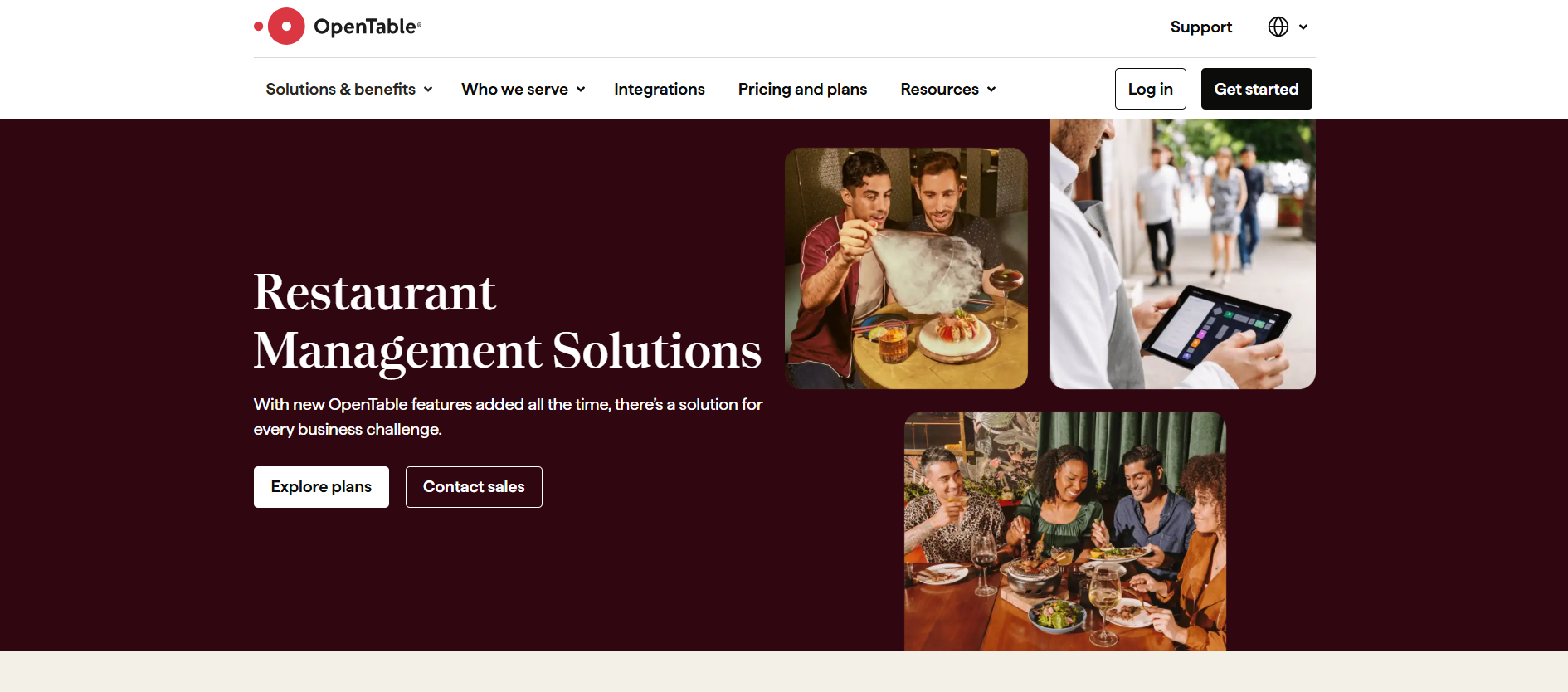
Key features of OpenTable:
- Optimize seatings, manage shifts, and prevent overbooking with real-time inventory updates.
- Build rich guest profiles with preferences, visit history, and spending behavior to deliver tailored experiences.
- Reach more diners through OpenTable’s global network, boost visibility, and track marketing ROI.
- Improve efficiency with detailed reports on staff performance, diner trends, and revenue.
- Offer prepaid bookings, upsells, and add-ons to increase average check value.
| App | Best for | Pricing | Free trial & demo |
| GoAudits | Operations, food safety, compliance | $10 per user per month when billed annually | 14-day free trial and personalized demo |
| Gofrugal ServeEasy | POS, billing, and inventory | 200 USD | Free trial |
| Odoo | Customizable ERP and POS | Contact for pricing plans | Free trial |
| Owner | Marketing, online ordering, loyalty | $499; billed monthly | Demo available |
| OpenTable for Restaurants | Reservations & guest management | Starts at $149 per month | Demo available |
Free Restaurant Audit & Other Food Safety Checklists
GoAudits offers a wide range of restaurant audit checklists. You can sign up for free and start using these checklists, or you can digitize your restaurant SOPs and food SOPs into actionable checklists.
- Restaurant Manager Duties Checklist
- Restaurant Opening Checklists & Templates
- Restaurant Closing Checklist & Templates
- Restaurant Cleaning Checklist & Templates
- Food Safety Checklists & Audit Templates
- BRC Audit Checklists
- FSSC 22000 Audit Checklists
- GMP Audit Checklist Templates
- HACCP-Based SOP Templates
What is a Restaurant Management App?
A restaurant management app is a digital solution that can simplify and automate day-to-day restaurant operations. It integrates multiple functions such as order processing, inventory tracking, table reservations, billing, employee scheduling, and customer management into one system. It gives you real-time insights into your restaurant’s performance and helps you make faster, data-driven decisions.
How Restaurant Management Apps Streamline Restaurant Operations
Restaurant management apps streamline operations by reducing manual tasks and improving coordination between front-of-house and back-of-house teams. Orders placed through the system are instantly shared with the kitchen, minimizing delays and errors. Inventory levels update automatically as items are sold, preventing shortages or overstocking. You can also monitor sales trends, track employee productivity, and manage customer preferences from one dashboard. This level of automation improves efficiency, consistency, and service quality. It enables you to focus more on enhancing the dining experience.
How Restaurant Owners & Managers Can Choose the Best Restaurant Management App
Here’s how you can make the best choice for your restaurant.
Start by assessing your operational needs. Identify challenges such as slow table turnover, inventory wastage, or staff coordination issues. Determine whether you need features like POS integration, online reservations, or real-time analytics. A clear understanding of your requirements helps you shortlist apps that align with your goals instead of paying for unnecessary features.
Look for feedback from restaurants similar to yours in size and service type. Pay attention to comments about ease of use, customer support, and system reliability. Consistent positive feedback often indicates dependable performance.
Evaluate both upfront and recurring costs. Some apps charge per user, while others follow a flat subscription model. Consider additional expenses such as installation, training, or updates. Choose a solution that supports long-term efficiency and can offer a better return on investment.
Look for clean layouts, easy navigation, and accessible dashboards to ensure your staff can use the app without extensive training. A complex interface can slow down service and increase errors, while an intuitive one helps your team focus on delivering excellent service.
Always request a free trial or a personalised demo. This allows you to test the app’s features in your restaurant environment and make evidence-based decisions. Observe how it handles real-time operations and integrates with existing systems.
Restaurant data includes sensitive information such as payment details and customer preferences. Ensure the app uses secure encryption and complies with data protection regulations. Verify the vendor’s security policies, backup systems, and user-access controls to safeguard your business information.
